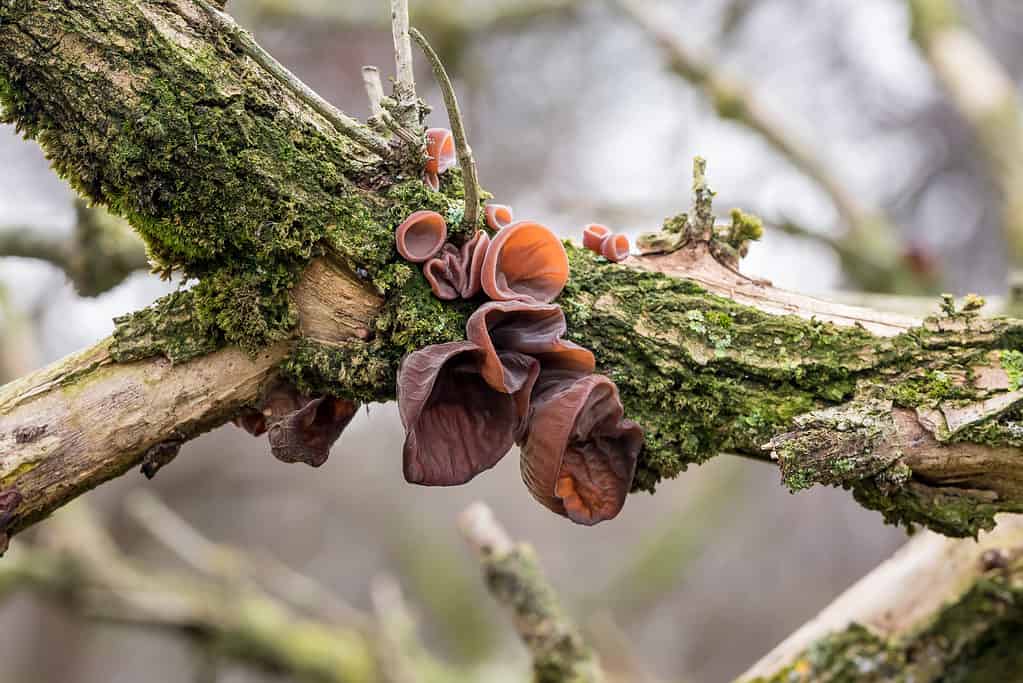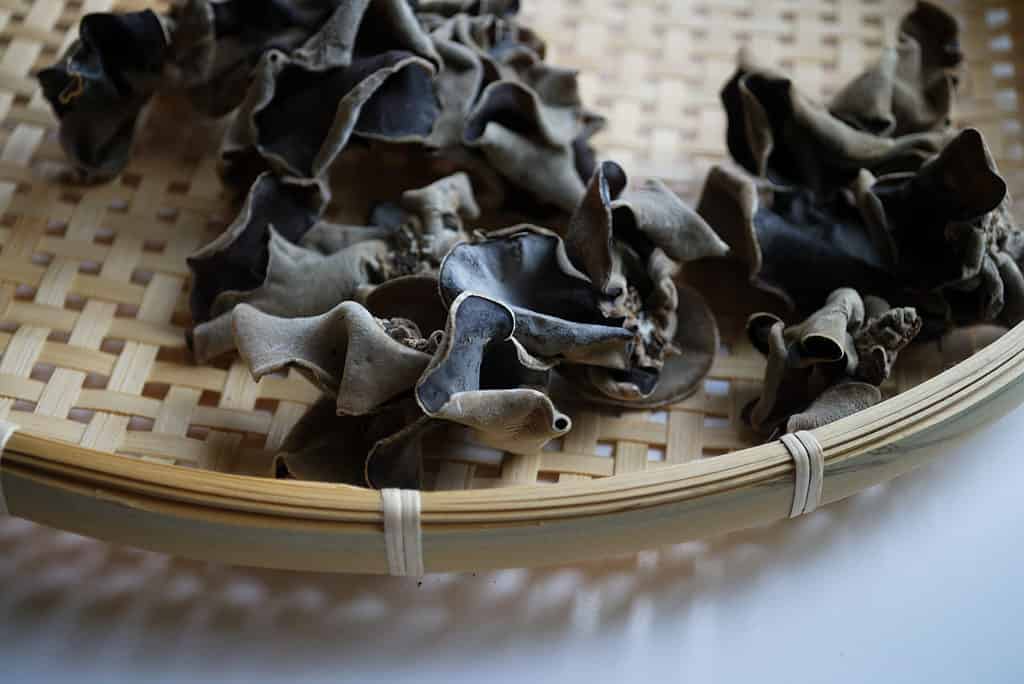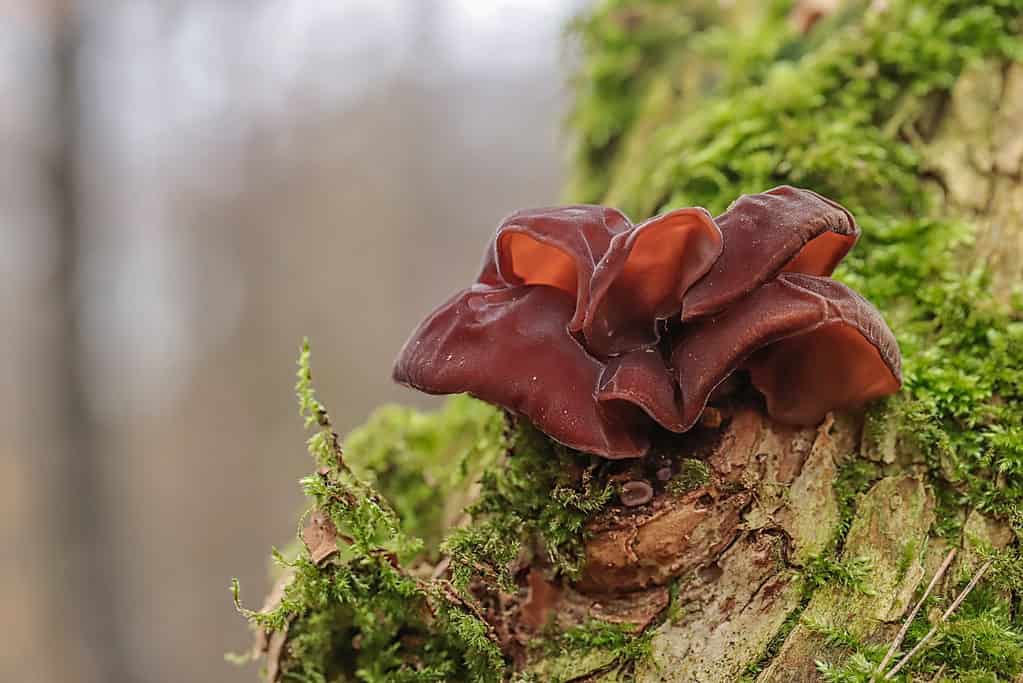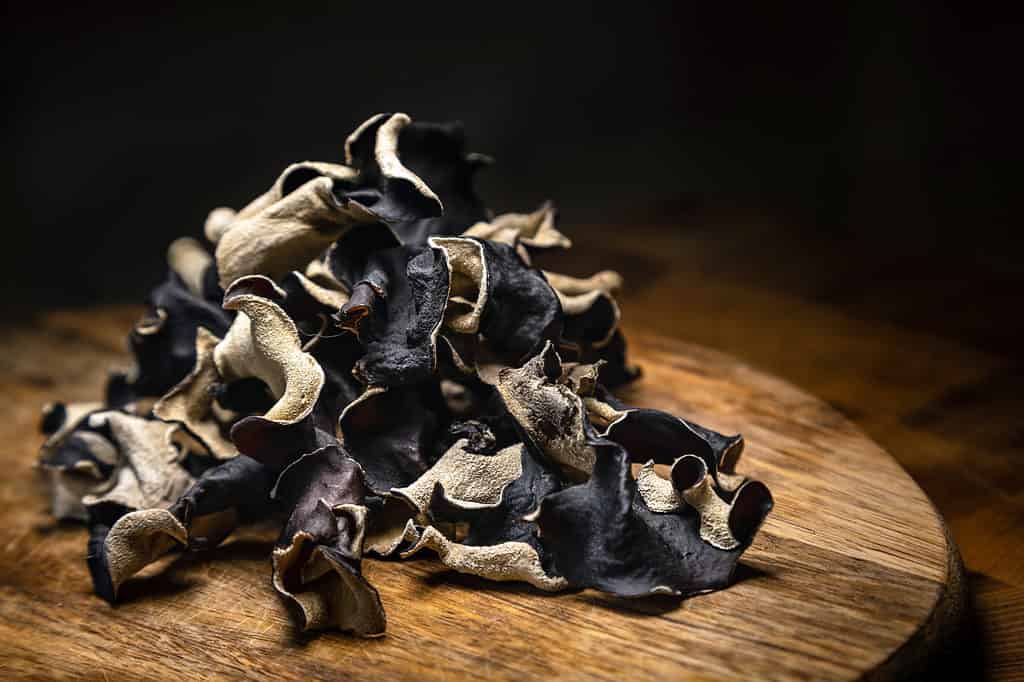The resurgence of interest in mushrooming and the health benefits of consuming mushrooms has led to an increase in learning about how to use different mushrooms for culinary and medicinal use. Whether you are branching out to try new things or found a traditional remedy you want to try, chances are you might be confused about which mushrooms you should be buying, and where to get them. If your recipe calls for wood ear mushrooms or black fungus, it can be hard to know the difference. This is your cheat sheet for the differences between wood ear mushrooms vs black fungus.
As with all things dealing with mushrooms and fungus, be careful! However, with wood ear and black fungus, you don’t run the risk of death so much as falling to misinformation. Misleading articles online not only confuse black fungus, wood ear mushrooms, cloud ear fungus, jelly-ear fungus, and others with each other, but they will mix up their scientific name, culinary and health uses, and even identification.
If you want to get your recipe, or traditional remedy, exactly right, you’ll want to pick the right mushrooms.
The Specifics of The Wood Ear Mushrooms

Wood ear mushrooms growing in the wild.
©Jolanda Aalbers/Shutterstock.com
The term wood ear can refer to two different things: either the grouping of several types of edible fungus that all appear similar, or a specific mushroom also known as cloud ear. Wood ear is used in some communities to refer to all or just some of the members of this group interchangeably.
The most common of these edible mushrooms under the name wood ear include: Auricularia heimuer, also known as black ear fungus or black fungus; Auricularia cornea, also known as cloud ear fungus or wood ear; Auricularia auricula-judae, also known as jelly ear; and Tremella fuciformis, also known as silver ear fungus.
Even though the wood ear is technically the more common name for the cloud ear mushroom, you can refer to any of these fungi as wood ear without being incorrect. For this article, however, we will refer to them as black ear, cloud ear, jelly ear, and silver ear.
Of these, the black ear, cloud ear, and silver ear are the most widespread and are used extensively in Chinese and Pacific cuisine. The jelly ear grows mostly in Europe and is more difficult to prepare and eat. The black ear and cloud ear are similar in appearance, texture, and taste. They can be substituted into any recipe for the other if you are short on one.
All types of wood ear mushrooms are called this because they resemble, in some way, a rubbery human ear growing on the sides of trees. They can grow alone or as a cluster of large ear-shaped fruits.
What is The Black Ear (Black Fungus) Mushroom?

Dried black wood ear mushrooms. They usually require to be re-hydrated before cooking or eating
©Nguyen Quynh Tra My/Shutterstock.com
Black ear mushrooms typically grow on fallen logs or oak trees in temperate climates. They are native to China, the Russian Far East, Korea, and Japan. Hence their popularity in Eastern Asian cuisine and medicine. Wild black ear mushrooms have a dark reddish or brown color while growing, and turn a dark grey or dark brown after they have been picked and dried. Cultivated black ear mushrooms have a darker color, often with a dark purple color on the underside.
Records of black ear mushrooms being used in Chinese food go as far back as the 3rd century CE. They were already being cultivated and grown in gardens for food and medicine by that time. It is a savory mushroom. The Chinese use it in a variety of soups, salads, and other dishes that use savory sauces. The Japanese use it as a common topping for ramen. In Korea, it is a popular ingredient in many noodle dishes.
The Chinese also believe that the black ear mushroom helps reduce the heat of the body, aiding in treating colds and fevers. They have used black ear mushrooms in medicines for thousands of years.
In 2010, it was the fourth most produced and exported mushroom in the world! Over $4 billion worth of mushrooms were exported from China alone.
What is The Cloud Ear (Wood Ear) Mushroom?

Wood ear mushroom growing on a piece of decaying wood.
©Marek Mierzejewski/Shutterstock.com
The cloud ear mushroom is also known as hairy wood ear or black treasure in China, rough-hair-tree-jellyfish in Japan, just ear in Hawaii, the ear mushroom in Indonesia, monkey’s ear mushroom in Malaysia, and rat’s ear in the Philippines. Other common English names include wood ear, wood fungus, ear fungus, and tree ear fungus. They are usually a pale brown or reddish color, with rare white specimens.
Like the black ear, the cloud ear grows on deadfall. It is common in southern Asia, Australia, all around the Pacific, Africa, and South America. It is also a common ingredient in traditional Chinese remedies and medicines.
The cloud ear mushroom has a weaker taste than the black ear fungus and is crunchier. It is more common in soups and broths than stir-fries or noodle dishes. The Cantonese use cloud ear mushrooms in a variety of desserts, and the Maori tribes steam them in the earth to eat them with potatoes.
Differences Between The Black Ear and Cloud Ear Mushrooms

It is common to see black ear or cloud ear mushrooms in a stir fry like this.
©suttirat wiriyanon/Shutterstock.com
The primary differences between the two mushrooms are subtle. If you are not an experienced mushroom forager or don’t use them often in your cooking, you might not be able to tell any differences between them at all. Aside from the color, black ear and cloud mushrooms have slightly different textures and tastes when used in cooking. They also have slightly different levels of chemical compounds that make them useful in medicine and traditional remedies. However, if you were to accidentally use one instead of the other, the difference between these textures and levels would hardly be noticeable.
In general, both types of fungi are excellent in treating several health issues. The compounds found in these mushrooms are good for fighting tumors, reducing inflammation, and fighting viral, bacterial, and parasitic infections. They also have anti-coagulant, anti-tumor, anti-diabetic, and lipid-reducing properties.
Where Can You Get Black Ear or Wood Ear Fungus?

Dried black ear mushrooms look like this, but the name on the bag will also identify them.
©Ja Crispy/Shutterstock.com
You can buy black ear and wood ear fungus from most online food retailers. If your local food market has an Asian section, it will most likely include black ear or wood ear fungus. Stores that carry exclusively foreign, imported food will most likely have a greater selection.
The package might be in a different language, so it would be helpful to identify the brand you want online beforehand, download a translation app, or learn to identify the color of the mushroom you want.
When you buy black fungus online, it will often include the name wood ear in the title somewhere. In fact, any type of wood ear fungus, regardless of the specific species, will probably have wood ear on the packaging in some way. If you want a specific type, you need to find that identification in the description before you buy. The same goes for cloud ear. If you search for just “wood ear” you will have a lot of different kinds of fungi which might not be the kind you’re looking for.
That’s it! You’re well on your way to becoming a wood ear expert. The world of mushrooms is an exciting, fascinating, and healthy one. By taking your first steps in identifying the types of wood ear mushrooms, you have opened a door to an adventure of tastes and textures you didn’t know you were missing!
The photo featured at the top of this post is © Ja Crispy/Shutterstock.com
Thank you for reading! Have some feedback for us? Contact the AZ Animals editorial team.







